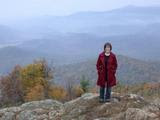
“That’s the problem with art, you can’t touch it.”
-overheard in 52 Renshaw Street.
Some part of the last three weekends I’ve spent taking in different sites across the Biennial. Certain sites have drawn me back, others left me satisfied with one visit. I still have so much to see and very glad I still have most of the next two months to take as much of it as I can.
Of all the Biennial works I’ve seen, the exhibition at Tate provoked the strongest reaction through a desire to interact with art in a physical way. The tactile qualities of so many pieces invited, even begged me, to reach out and touch them and feel their materials and construction. To test how soft or hard the objects in Magdalena Abakanowitz’s Embryology are; to let my hand hover over the flames of Jamie Isenstein’s Empire of Fire and feel their heat; to uncork the vessels of Nina Canell’s On Thirst and let the water stream to the floor.
The only piece which fulfilled this desire of interaction was Franz West’s Smears, which actively invited the viewer to sit and touch what looked like a giant strand of toothpaste squeezed out into a gallery and hardened.
I don’t know what exactly brought out this impulse to behave like a small child and step outside the boundaries laid down, visibly or not, around the works, but oberserving my reactions to this desire and its denial was one of the more heightened engagements with art I’ve had in a long time.
And in every gallery is at least one parent saying to a child ‘no, you mustn’t touch’.
Potentially the greatest gift of the Biennial to Liverpool is the opening up of spaces not normally accessible to the public and the chance to interact both with the art and the locations themselves. There’s so much more to say about repurposed spaces like the Europleasure Interntational/Scandinavian Hotel and the former Rapid building on Renshaw Street. The acts of middle-aged vandalism set to a whimsical Beatles-inspired score in Cristina Lucas’ Touch and Go. The political impulses behind Alfredo Jaar’s The Marx Lounge installation-cum-reading room and his film collaboration We Wish to Inform You that We Didn’t Know, a powerful document about the Rwandan genocide and the West’s failure to respond. The forest of ribbons that makes up the labyrinthine Ndize by Nicholas Hlobo, inviting you to get lost in a tangle of colour, not knowing where any path will lead and happy to be embraced by this maze.
You might not always be able to touch art, but without a doubt art can touch you.

No comments:
Post a Comment